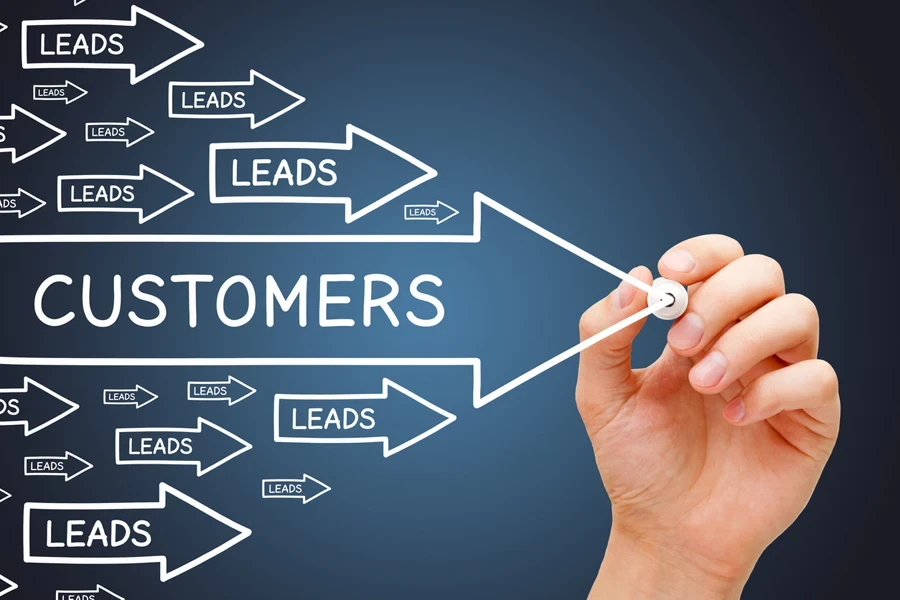Webinar marketing stands out as one of the most preferred digital marketing strategies for B2B professionals. It enables them to reach audiences that have shown interest and want to hear what they have to offer. Studies show that 91% of B2B marketers prefer webinars over other types of content to attract leads, nurture them, drive conversions, and position their brand as an authority in their industry.
However, creating and hosting webinars can be a challenge to most marketers. If you feel overwhelmed by webinars, don’t panic. Here’s how to get started with webinar marketing in 2025.
Table of Contents
What is a webinar, and how huge is the market size?
Benefits of webinar marketing
Different types of webinars
How to create an effective webinar
Webinar marketing best practices
Conclusion
What is a webinar, and how big is the market?
A webinar is an online event that an individual, business, or company hosts and broadcasts live at a specified date and time. Most webinar platforms allow the creation of a registration page associated with a webinar so that an audience can sign up, get notified when it goes live, and receive a recording of the webinar.
The webinar and webcast market is vast. Market analysts estimate it to be worth USD 1.24 billion in 2024 and expect it to grow to reach USD 2.2 billion by 2031. It will grow at a compound annual growth rate (CAGR) of 7.46% over the 2024-2031 forecast period.
This growth is mostly driven by an increasing number of internet providers, who ensure an uninterrupted network connectivity supply, ensuring webinars and webcasts work effectively. North America leads this market, closely followed by the European and Asia Pacific markets.
Benefits of webinar marketing
Webinars have the following benefits for your brand:
1. Generate leads

According to one study, 73% of B2B marketers say webinars are highly effective tools for lead generation. In another study, 20% to 40% of webinar attendees turn into qualified leads, showcasing this strategy’s huge potential for your business.
2. Collect data
Data is highly valuable in modern-day marketing, and webinars help generate useful data for your business.
Webinars help you learn more about your audience’s engagement rate, the topics that resonate with them, and the attendance data to help plan future events. Most importantly, you attain attendees’ details with their permission, which you can use to communicate with them about your products and services.
3. Cost-effectiveness

Webinars are cost-friendly to create and host. It doesn’t matter the location of your attendees around the world; webinars enable you to bring them together without a travelling budget.
Additionally, you can talk with experts in your field without having to travel to their location. All you need is webinar software, a computer, a good-quality microphone to capture audio, and an internet connection.
4. Content repurposing
Content repurposing, or content recycling, is another benefit you enjoy when creating webinars. This is the practice of reusing the elements of existing content by converting it into a new format to expand its reach and lifespan. In fact, 70% of small businesses say they repurpose their content.
You can transform the long-form content from the webinar recording into short-form videos for TikTok, Instagram Reels, or YouTube and share them with people who couldn’t attend your live event.
Different types of webinars
There are various types of webinars that you can use to boost your marketing efforts and increase your conversion rate. They include the following types:
1. List building webinars
List building is a great way to attract potential customers and convert them into regular buyers. To build and grow your list, you need to create a subscription form so that visitors interested in your brand’s offerings can sign up with their email addresses.
Similar to subscription forms, list-building webinars enable you to collect valuable information from participants, such as their names, email addresses, and location. You can then use this data to segment groups for targeted marketing through personalized campaigns.
2. Webinars showcasing thought leadership

To build a business, your brand needs to be known for something special, and through thought leadership, it becomes easier for audiences to recognize you.
As a business owner, you can become a thought leader by delivering great content to your audience. This enables you to build authority, boost brand visibility, and attract high-quality leads.
Webinars that provide valuable information can position your brand as a thought leader in your industry, which can have a considerable impact on a buyer’s perception of your company. According to a study, 73% of consumers trust a company’s thought leadership content more than its marketing materials and product sheets when assessing its capabilities and competencies.
3. Lead nurturing webinar marketing
Lead nurturing involves guiding prospects along their journey toward conversion and, eventually, loyal customers. Most businesses use email marketing to nurture their leads, but you can help new prospects through your sales funnel by hosting webinars.
With webinar marketing, you can use a case study, workshop, or report summary to educate your audience and equip them with the right information and tools to take the next step.
4. Conversion webinars

Live commerce has emerged as one of the top business trends in generating online sales. One way to leverage this trend is through webinars.
About 37% of B2B marketers list webinars as one of their revenue sources. In addition, webinars have the highest conversion rate compared to any other type of content, ranging between 5% and 20%. Therefore, with a well-laid-out strategy, you can use conversion webinars to sell related products to your viewers.
How to create an effective webinar
Now that you know the advantages of webinars and the different types of webinars you can use to engage with your customers, you still need a few things before getting started.
The most basic things you need are a topic, a webcam, an internet connection, and an audience. However, to perfect your webinar, you require a couple more tools, such as:
- A reliable webinar platform where the webcast will take place.
- An email marketing service to promote your webinar to your marketing list and social media platforms.
- An online form builder for attendees to sign up and collect their details.
When you have these things ready, let’s look at how to create a successful webinar.
1. Identify your audience
First and foremost, you need to identify your audience for the webinar. This will mostly involve creating a buyer persona, which will help you learn about your customer’s age, gender, interests, pain points, behaviors, goals, and more. Once you know your ideal customers and what they want, creating content that addresses their problems becomes easy.
If you don’t have this data, you can create a survey using a form with multiple fields your customers can fill in. This way, you can identify the topics that resonate with them and discuss them in the webinar.
2. Pick an interesting webinar topic

The next step is to find an interesting topic you will discuss in your online seminar. Remember that the discussion topics should always align with your customer’s goals and interests.
For example, if your audience wants to know how to enhance their skincare routine, you wouldn’t serve them content about the newest eye makeup trends.
Of course, you can always teach them new things and promote new aspects of your business. However, it’s good to choose topics related to your customer’s needs so that you can show them how your product can solve their problems.
3. Establish what attendees will gain from the webinar
Once you have picked the most appropriate topic, it’s time to establish how your audience will benefit from the webinar. At this point, you need to think of your webinar as a solution to specific or multiple problems your customers experience.
Using the skincare example above, here are some things your audience can learn from the webinar:
- Understanding skin types: Learn how to identify skin types and why choosing skin care products based on this knowledge is crucial for effective results.
- Building an effective skincare routine: Learn the steps for a well-rounded skincare routine, such as cleansing, exfoliating, moisturizing, and sun protection, and offer tips on how to properly layer them to gain maximum benefits.
- Incorporating active ingredients: The audience will learn about active ingredients such as vitamin C, retinoid, and hyaluronic acid and understand how incorporating them into their daily routines can address specific problems like hyperpigmentation, acne, and anti-aging.
In this example, customers are highly likely to learn how your products will address each of the problems they are facing. This will make your webinar solution-oriented, as it assures that your customers will gain value from your content.
If the problem is multifaceted, don’t hesitate to collaborate with experts to make it easy to break down and solve with ease.
4. Choose the right type of webinar
Webinars can be used at any stage of your sales funnel, therefore, you need to choose the proper type so that it aligns with where the buyers are in the sales journey. This way your efforts will be more effective and highly targeted.
Take the time to look at your buyer personas to know what customers need to help them with their progress in the sales funnel, and choose a webinar type based on this information. To help you pick the type of webinar marketing at each stage of your funnel, use this simple guide:
- Top of the funnel: brand awareness webinar.
- Middle of the funnel: webinars showcasing your expertise in your field.
- Bottom of the funnel: webinar to provide solutions to customer’s issues.
5. Create a webinar agenda

An agenda is important in any event, project, or meeting. Its role is to help structure the discussion, outline key objectives, ensure important topics are covered, and keep you focused and on track.
For your agenda to be impactful, you need to research the topic properly, narrow it down into sections, and check for flow.
The amount of research you should conduct matters on how familiar you are with the topic. Make sure that you are well-equipped because people will ask you many questions during your webinar.
If you are not adequately prepared for your seminar, it could hurt your brand. Therefore, look for the challenges that your customers are facing and write down a list of questions that they are likely to ask.
Then organize your ideas into sections each providing solutions to problems that your audience may encounter when using your products and service. Finally, ensure that your sections have a flow to give your audience a good experience in your webinar.
6. Create your webinar talking points
After you have created your agenda and arranged your ideas into sections, you need to come up with talking points. These points should be detailed enough to add value to the attendees of your event. Therefore, spend some time writing down high value ideas that will elevate the audience experience.
Ideas that can help you add value to your ideas include the use of facts, figures and examples. This enables your viewers to appreciate your offerings, especially when you introduce concepts that are unfamiliar to them.
7. Create a strong value proposition and call to action
Like any other digital marketing strategy, you should have a call to action in your webinar. A CTA is not only important for marketing but also crucial in generating results.
If you want to convert your attendees into customers, you need a call-to-action to convince them to buy your offers. The basic principles of a CTA button still apply by which it should be relevant, straightforward, and easy to interpret.
8. Create a landing page

As soon as you have everything ready, including the date for your webinar, prepare a landing page for promotional purposes. The landing page is also where people will be registering for the webinar, so make sure that it does not lack these crucial features for it to convert as many attendees as possible:
- Clean, minimal and organized design: A simple landing page design can have a huge impact on its effectiveness because it becomes easy for people to navigate and convert. You can also include interesting imagery that matches your branding.
- A catchy headline: Place your headline at the front and center of your page while including keyword phrases that people are likely to search.
- A description of the webinar: Include a description of what attendants will learn as well as any guests that will be cohosting your live event. A description also helps with search engine optimization.
- A lead capture form: A form is required to capture participants’ details such as names and email address to send updates about your webinar.
A study by GoToWebinar found that 59% of webinar registrants sign up on the week it’s scheduled, and 41% sign up within the registration window. Thus, give yourself some time to promote your landing page.
Webinar marketing best practices
1. Promote your webinar through email marketing
There are various marketing channels you can use to promote your webinar. Paid ads, partner brands, social media and email are the most effective.
Email marketing emerges as the easiest way to draw many people to your webcast. All you need to do is to inform your subscribers about your webinar through your email marketing software and invite them to join.
2. Leverage social media accounts
Marketing on social media will also suffice if you want to maximize the visibility of your webinar campaign. You can take advantage of your social media followers from Instagram, Facebook, WhatsApp, and LinkedIn to create awareness and attract a large audience.
In addition, you can leverage paid ads to attract interest from the millions of people who use social media platforms all around the world.
3. Ask closed questions
Higher engagement rates generally lead to higher conversion rates, and one way to engage your audience is by asking closed questions. These questions are designed to elicit straightforward responses from your viewers to keep the webinar momentum flowing.
Some of the questions you can ask viewers include:
- Has anyone encountered this issue before?
- Is this information helpful so far?
- Can everyone see the presentation clearly?
You can use closed questions at any stage of your session, so make sure that you utilize them throughout the webinar to keep your audience engaged.
4. Offer a prize for attending your webinar

To further boost the engagement rate of your webinar, you can introduce a competition at the beginning of the event. This will make your audience interested in the event and an opportunity to win something.
When organizing webinar competitions, offer relevant prizes to your audience and make it valuable enough for them to want to join the discussion. And, don’t forget to reward the winner.
5. Include Q&A sessions
As your webinar gets interesting, it will likely trigger thoughts and questions from the audience. Try to spare at least five minutes for a Q&A session to engage with the attendees. You can allocate more time if you have a special guest, such as an influencer.
Conclusion
Webinars are great tools that you can use to attract new leads, nurture them, and showcase your thought leadership in your industry. However, for you to host a successful one, you need to plan and market it strategically.
Start by understanding your ideal customer and picking the topics that interest them while addressing the challenges they will likely face while interacting with your brand. Remember to invite as many people as possible to your webinar using multiple marketing channels, from email to social media.
Finally, you can discover more insightful marketing tips like these from the Alibaba.com Reads website.





 Afrikaans
Afrikaans አማርኛ
አማርኛ العربية
العربية বাংলা
বাংলা Nederlands
Nederlands English
English Français
Français Deutsch
Deutsch हिन्दी
हिन्दी Bahasa Indonesia
Bahasa Indonesia Italiano
Italiano 日本語
日本語 한국어
한국어 Bahasa Melayu
Bahasa Melayu മലയാളം
മലയാളം پښتو
پښتو فارسی
فارسی Polski
Polski Português
Português Русский
Русский Español
Español Kiswahili
Kiswahili ไทย
ไทย Türkçe
Türkçe اردو
اردو Tiếng Việt
Tiếng Việt isiXhosa
isiXhosa Zulu
Zulu